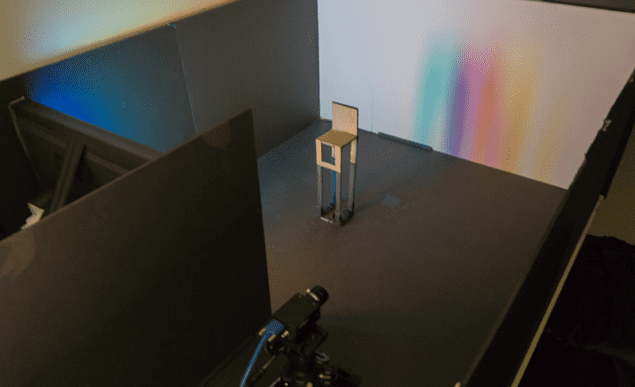Physics World January 25, 2019
If the line of sight between a target object and a camera is blocked some of the light from the target can reach the camera via diffuse scattering from surrounding objects. Researchers at Boston University have achieved non-line-of-sight imaging with an ordinary digital camera without the need for measuring arrival times. Their algorithm analyses information that is contained in shadows cast by an obscuring object that is placed between the target object and the relay surface. The technique relies on the fact that shadows are not sharp, but rather have penumbrae at their edges. The subtle variations in the color and intensity of penumbrae light carry information about what lies behind the obscuring object. The technique could lead to a diverse range of imaging applications based on low-cost components… read more. TECHNICAL ARTICLE

Light from the concealed LCD monitor (left) is partially obscured by a chair-shaped object (centre). A digital camera (bottom) captures the resulting shadow that is cast on the relay surface. Courtesy: Goyal lab at Boston University